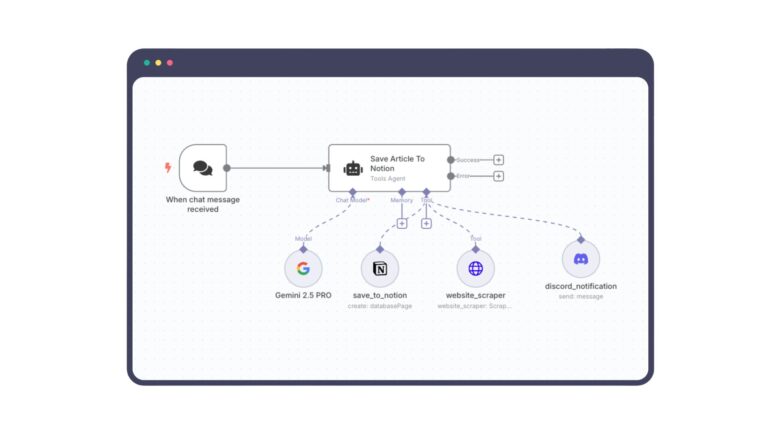So you’ve got a great product, early adopters are biting, and your startup is finally getting noticed. But here’s a sobering thought: the moment your name appears in the news or gets a round of funding, you’re suddenly on a different kind of radar, the hacker’s radar.
A 34% year-over-year increase in breaches tied to unpatched vulnerabilities, especially in edge devices like VPNs and firewalls, makes this attack vector a rising star for all the wrong reasons.
What Is Vulnerability Management, Really?
Vulnerability Management (VM) is not about being paranoid, It’s about being prepared. Think of it as your digital immune system, just like your body scans for threats and sends defenses to fight them off, a VM program constantly looks for weak spots in your tech environment and helps you respond.
In more formal terms, vulnerability management is the continuous process of identifying, evaluating, treating, and reporting on security vulnerabilities in your systems and software. But for startups, it’s not just a technical checklist, it’s survival.
Why Startups Can’t Afford to Ignore Vulnerability Management
Here’s the thing most startups operate in an intense pressure cooker of deadlines, minimal staffing, and product-market fit hustle. Security often gets treated like a back-burner item, only to be dealt with when there’s a breach or compliance requirement breathing down your neck.
But here’s the kicker: if a security vulnerability leads to a breach early on, your reputation might not recover. Investors and customers may walk and those free-tier tools? They won’t save you.
A solid Vulnerability Assessment (VA) program helps startups:
-
Identify critical flaws before attackers do.
-
Build investor confidence by showing security maturity.
-
Avoid compliance fire drills (think SOC 2, HIPAA, ISO 27001).
-
Scale securely without retrofitting security at every growth stage.
Clearing the Fog: Common Misconceptions
Let’s bust some myths. You might think you’re doing vulnerability management if you’re:
-
Running a VA scan every few weeks.
-
Scheduling penetration tests once a year.
-
Using off-the-shelf tools with default settings.
-
Doing patch management manually.
Spoiler alert: None of these alone = Vulnerability Management. True VM is strategic, It’s about knowing what matters, fixing what’s risky, and tracking everything consistently.
Vulnerability Management 101: The Building Blocks
Understanding Vulnerabilities
Vulnerabilities are flaws or misconfigurations in your system that can be exploited. These might stem from bugs in code, insecure setups, or even third-party tools you’ve integrated blindly.
Where Do Vulnerabilities Lurk?
-
Infrastructure: servers, routers, cloud resources.
-
Applications: web apps, APIs, mobile platforms.
-
Third-party components: open-source libraries, SaaS integrations.
Prioritizing Risk
Not all vulnerabilities are created equal. A minor issue in a public-facing API may be far riskier than a severe bug buried in a dev environment. VM is about contextual prioritization, not panic.
Phase 1: Identification – Know Thyself
Before you can fix anything, you need to know what you have.
Why Asset Inventory Is Non-Negotiable
Most startups can’t protect what they don’t even know they own, maintaining an up-to-date asset list is the first rule of security. Understanding assets comprehensively is essential for a successful vulnerability management program, not just running scans.
Pro Tips for Asset Identification:
-
Infra: Use tools like Nmap or Nessus (test carefully).
-
Applications: Map app-to-server relationships, don’t forget shadow IT.
-
Cloud: AWS Config, Azure Resource Graph are your friends.
-
Endpoints: Query your identity systems and BYODs count too.
And remember, this is not a one-time job and you need a living inventory. Asset identification is not a one-time effort, it’s an ongoing task as organizations evolve and new assets emerge.
Phase 2: Vulnerability Scanning – The Engine Room
Choose the Right Tools
Options like Tenable or Qualys all work, but pick based on what you actually use and where you’re hosted.
Key criteria to look for:
-
Low false positives
-
Good detection coverage
-
Custom check capability
-
Support for authenticated scans
-
Minimal network impact
-
Scalability and reporting
Internal vs. External Scanning
-
Internal scans = protect your LAN, databases, internal tools.
-
External scans = simulate how hackers see you from the outside.
You need both to comply with standards and truly understand your attack surface.
Phase 3: Cloud Complicates Everything
Cloud isn’t insecure by default it’s just differently dangerous. Cloud environments introduce a distinct attack surface, which includes public-facing resources, APIs, and services that can be inadvertently exposed, making comprehensive understanding crucial.
Startups living on AWS, Azure, or GCP must understand that cloud vulnerabilities come from:
-
Misconfigurations (open buckets, unrestricted ports)
-
Public APIs exposed unintentionally
-
Lack of workload visibility
Must-Have Tools
-
CSPM (Cloud Security Posture Management): Monitor config, automate fixes, get compliant.
-
CWPP (Cloud Workload Protection Platforms): Scan containers, VMs, and serverless functions for runtime vulnerabilities.
These aren’t nice-to-haves, they’re survival tools in a SaaS startup world.
Phase 4: Analyze Before You Panic
It’s easy to drown in vulnerability data. Reports with 1,000+ findings are common, but only a handful matter. Organizations should focus on prioritizing vulnerabilities instead of just reporting them. Analysing the findings is crucial to effectively address security risks.
Get Smart with Prioritization
It’s important to identify and prioritize high-risk vulnerabilities while also considering the context of the vulnerabilities, such as system exposure. For instance, a medium-risk vulnerability could become a priority if it is publicly accessible.
Use CVSS scores, sure but layer in context:
-
Is the asset exposed to the internet?
-
Is it tied to critical business functions?
-
Are there known exploits in the wild?
Focus on what’s exploitable and impactful. The overall message encourages a more mature and analytical approach to vulnerability management, advocating for the rigorous analysis of reports and the adoption of standardised scoring systems to enhance decision-making and resource allocation.
Phase 5: Mitigate, Monitor, and Move
You’ve got the list. Now what? possessing strong risk management skills is crucial in determining the best course of action when immediate fixes for vulnerabilities aren’t possible.
-
Fix immediately: for critical, apply patches or isolate systems.
-
Delay fixes: use risk trackers and monitor closely.
-
Compensate: use firewalls, access controls if a patch isn’t ready.
-
Accept risk: sometimes, it’s a business call.
But always document your decisions and track your open vulnerabilities.
Phase 6: Reports That Make Sense
Your CTO doesn’t need a 100-page scan report and your developer doesn’t need vague summaries. The findings of vulnerability assessments must be presented in a clear and concise manner to ensure effective utilisation of the results.
Match the Report to the Role:
-
Exec summaries: KPIs, risk trends, pie charts.
-
Tech reports: CVEs, affected systems, remediation steps.
Key metrics to track:
-
Mean Time to Detect (MTTD)
-
Mean Time to Remediate (MTTR)
-
Number of critical vulns open > 30 days
-
Asset coverage
These are the health vitals of your VM program. Metrics are crucial for evaluating the success of a vulnerability management program. They serve as key performance indicators (KPIs) to determine how effectively the program is functioning.
Final Thoughts: Start Small, But Start Now
You don’t need a full-blown enterprise VM system on Day 1. Start with:
-
A clear inventory.
-
One trusted scanner.
-
A regular cadence (monthly, bi-weekly) for scans.
-
A simple way to triage and track.
-
A rhythm of reporting.
Security is a journey. For startups, vulnerability management isn’t about perfection it’s about momentum. The earlier you bake it in, the fewer sleepless nights you’ll have when the stakes get higher.
“You can’t fix what you don’t see. Let’s shine a light.”
Answer the following 10 questions to assess the maturity of your startup’s vulnerability management program, Be honest this is for your eyes only.







